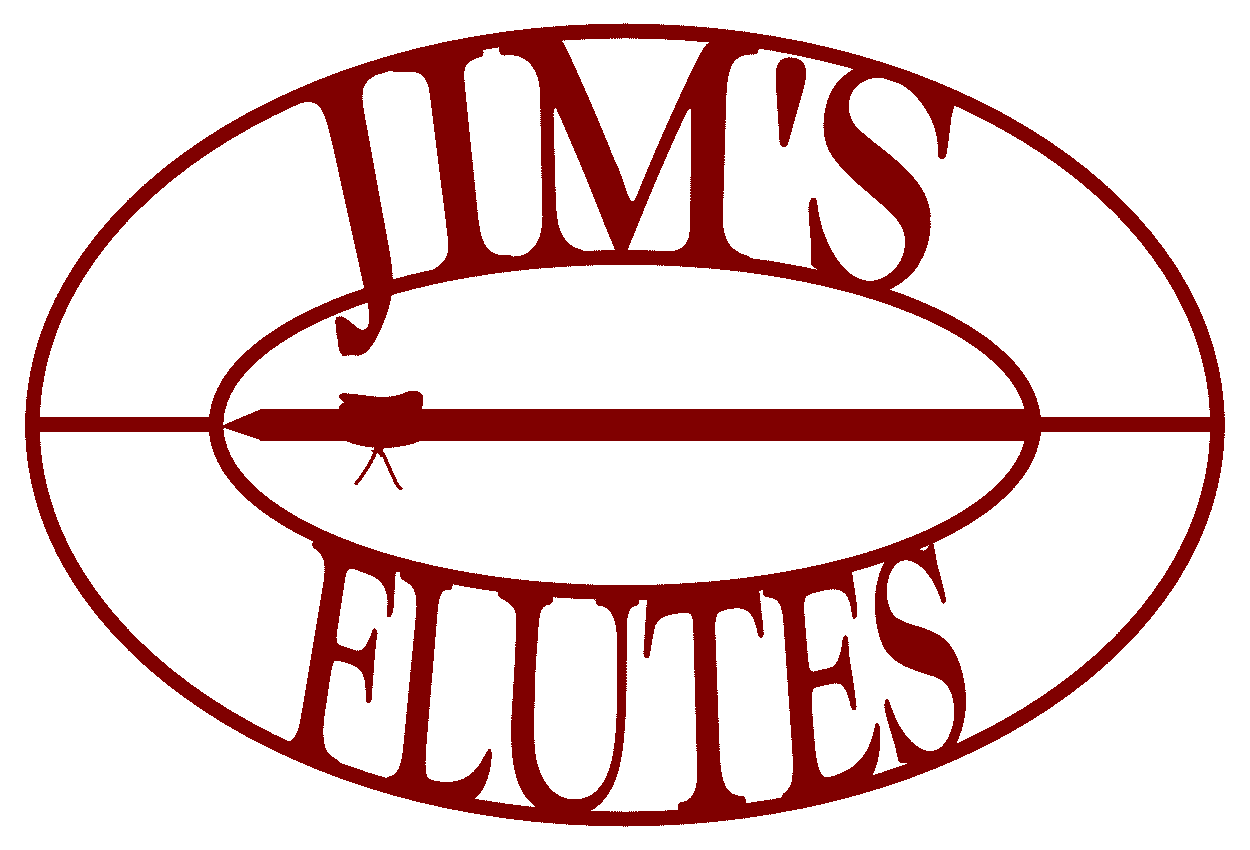Selecting a Flute
Finding a flute that speaks to you is very personal. Some say that you don’t find a flute, it finds you. If that is indeed the case, then there are still some things you can do to help your flute find you. First, figure out what appeals to you and how you intend to use your flute. Then make sure you make yourself available to those types of flutes.
There are many aspects of a flute to consider, but ultimately they all reduce down to aesthetics and sound quality— the look of the flute and what it sounds like. The next few sections cover the various choices available to you with these two thoughts in mind.
Wood
Wood plays a large role in the aesthetics of a flute. It also contributes to it’s sound. In general, softwoods have a mellower sound while hardwoods have a brighter tone. I say in general as there are many other factors, such as wall thickness, TSH configuration, finger hole size and finish, that can affect a flute’s sound. It is entirely possible to have a mellow sounding flute made from a hardwood and a bright sounding flute made from a softwood. My advice is to consider wood an aesthetic choice and allow the flute to speak it’s tone.
When I first started making flutes, I used cedar. Unfortunately, I developed a sensitivity to the cedar dust, so now I use mostly hardwoods. I have used many species native to NY State. Of those, my favorite is Curly Cherry. I have also used more exotic woods such as Purpleheart, Zebrawood, Paduk and Lace /Leopard Wood.
Finish
As with wood, a flute’s finish contributes to both it’s aesthetics and it’s sound. Some finishes, such as thick polyurethane, actually contribute more to a flute’s sound than the underlying wood. While they provide excellent protection and low maintenance, they also mask the characteristics of the wood. Personally, I prefer to use a natural Beeswax/Mineral Oil finish on my flutes. Regular maintenance is required, but it is a small price to pay for experiencing the true sound and feel of the wood.
Ornamentation
Flute makers employ many techniques to add to the aesthetics of their flutes. Some of the more popular techniques are inlay, pyrography (wood burning) , beading and ornate carving. Many flutes have beautifully carved birds depicting animals or other symbols. In these cases the bird is usually referred to as a totem or fetish. Ornamentation is solely an aesthetic issue and if done appropriately has no affect on the sound of the flute. I usually prefer to use ornamentation sparingly, opting for simple, minimalistic curving shapes that allow the natural beauty of the wood to take center stage.
Voicing
Just as ornamentation, finish and wood selection create beauty for your eyes, voicing and tuning create beauty for your ears. A flute’s voice, in my opinion, is one of it’s most important attributes. Tuning is very important as well, but a flute with a poor voice will still sound poor even when it is in tune. If a flute doesn’t sound good, you might as well hang it on a wall. My flutes are meant to be played.
The easiest way for me to describe a flute’s voice is to discuss three of it’s main qualities: Volume (Soft — Loud), Timbre (Reedy/Thin — Rich/Full), and Breathiness (Pure/Clean — Breathy/Dirty). A quiet flute is a good choice for personal meditation. A louder flute works well for playing without amplification or with other instruments. A reedy sound can lend a Middle Eastern feel, while a rich full sound conjures up thoughts of the canyon lands. A clean pure tone is bell-like, but a breathy tone can add layers of emotion and expression. A good player can manipulate the voice of a flute with breath control and other techniques to achieve many of these affects from a single flute. The voice that is best for you will depend on your preferences and how you intend to use your flute. My flutes have a variety of voices.
Tuning
The early Native American Flutes were tuned using the proportions of the intended player. It went something like the following. The length of the flute is the length of the arm, finger holes start a hand width from the foot and are spaced a knuckle apart with another hand width between the top finger hole and the TSH. There was no notion of key or scale, only that the flute was in tune to the player. This is sometimes referred to as grandfather tuning. Many flutes are still tuned this way today.
When settlers arrived from Europe, they brought with them the western musical system. This introduced the concepts of key and scale to flute tuning and caused many to shift from tuning to a specific player to tuning to a specific reference frequency. This new method is called concert tuning and allowed flutes to be played with other instruments. The frequency of the first A above middle C on the piano is used. Today. this is widely accepted as 440 Hz. at 72° F, but can vary based on local tradition and type of music. There is even interest in using 432 Hz. to harmonize with Earth’s frequency.
Like many musical instruments, the pitch produced by a flute is affected by environmental conditions. Temperature, humidity and altitude can raise or lower the pitch. Some instruments have ways of compensating for this, but Native American Style Flutes typically do not. Unless otherwise requested, I tune my flutes using the 440 Hz. standard.
Key
Native American Style Flutes are made in a variety of keys from ultra low, which is way down near the lowest notes on a piano, to ultra high, which is way up near the highest notes. The majority of flutes are keyed to the notes just above middle C, with the most commonly made keys being F# and G. Interestingly enough, flutes in these keys are similar in size to many grandfather tuned flutes. The reason for this is the relationship between a flute’s size and it’s key. These particular keys result in flutes that are naturally proportioned to the average person. Each person has a playable range of flute keys, outside of which the flute is either too big or too small for the finger holes to be reached comfortably. If you will be playing with other musicians, you should think about building a collection of flutes in different keys. I make flutes in many keys, the majority of which are in the playable range of the average person.
Scale
Typically, Native American Style Flutes are made with 5 or 6 finger holes that are tuned to play a Minor Pentatonic Scale. I usually make 6 holed flutes. This scale is the essence of the hauntingly beautiful music made with these flutes. Any style music can be played, though, as all the notes of the diatonic scale (think piano) can be fingered. Other scales can be used as well. The most interesting scale I have used is the Jewish Ahava Rabba Mode. This resulted in an unusual 7 hole flute Think somewhere between a snake charmer and “if I were a rich man Ya ha deedle deedle, bubba bubba deedle deedle dum” and you’ll know what it sounds like.
Tonal Range
The tonal range of the Native American Style Flute is limited when compared with other flutes. Usually only a few notes more than an octave will sound. This is a simple fact of the physics of the flute. This does not diminish it’s importance or usefulness as a musical instrument. There are a surprising number of melodies that fit into this range. My flutes typically play at least two whole steps into the second octave. I strive for three whole steps. For a flute in the key of G, this is either the A above the octave G or the B. This is between 15 and 17 keys on the piano (including both black and white keys).


